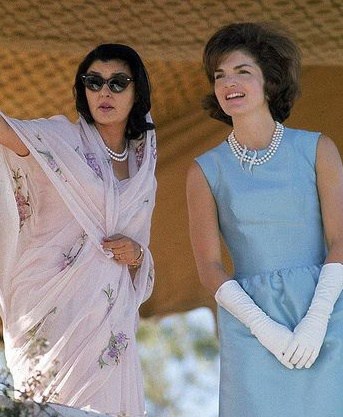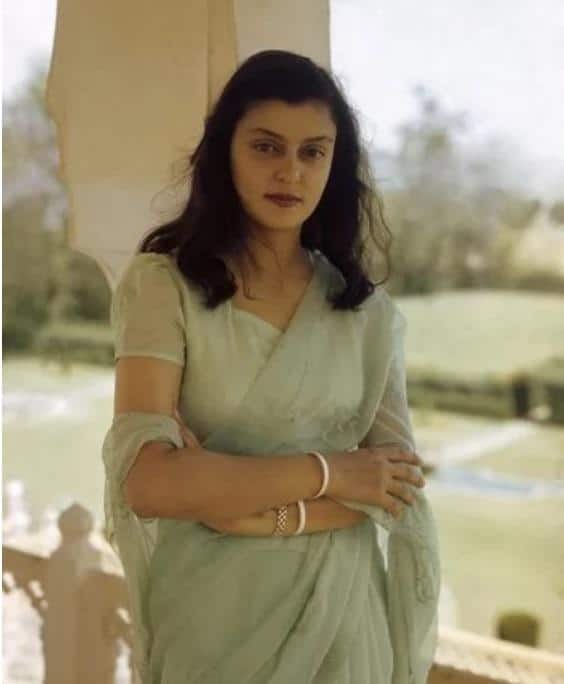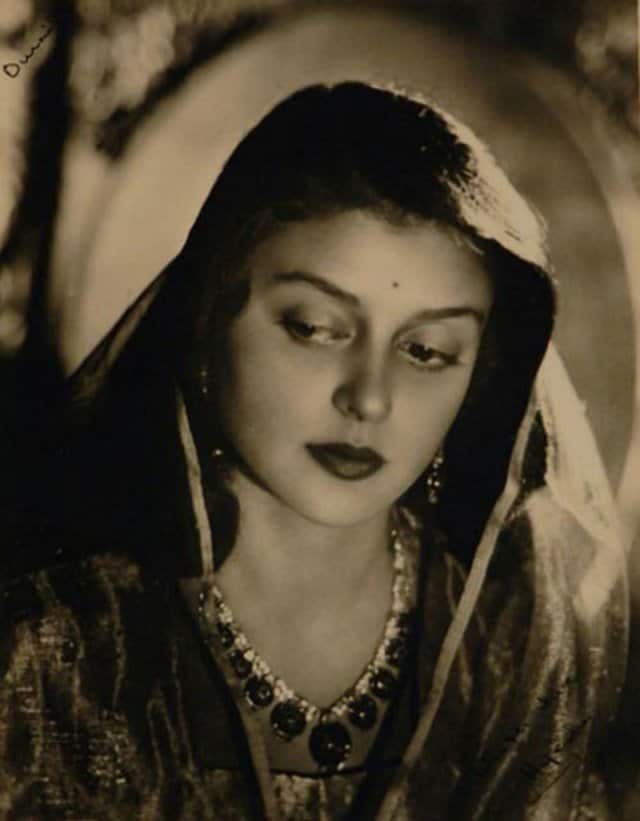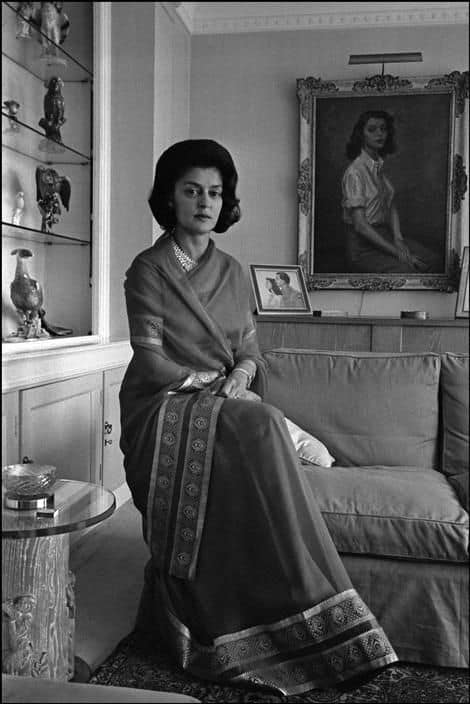23 May Maharani Gayatri Devi : Epitome of Style and Grace

Maharani Gayatri Devi
“She dedicated her life to creating a subtle, but implicative, change in society, particularly with her continuous efforts for the empowerment of Indian women from the confines of the veil” -Devraaj Singh of Jaipur, Grandson of Gaytri Devi.
India became a democracy almost 70 years ago. Prior to that, the Indian subcontinent, was divided into princely states, lead by their rulers. The rulers bore various titles as Nawabs, Sultans, Rajas or Maharajas. The sartorial styles of these Kings and Queens, had a huge impact on the fashion trends of the subjects of their kingdom or even on the people of the whole country.
At the time of the British withdrawal, 565 princely states were officially recognized in the Indian subcontinent. Some of the descendants of the ruling families continue to have an influential role in the local administration or in national politics. They are venerated with titles such as kings and queens by the people of the country.
Maharani Gayatri Devi, born on 23 rd of May 1919, lived a glorious and fulfilling life
till July of 2009. She became the third Maharani of Jaipur after she got married to His Royal Highness Maharaja Sawai Man Singh.
Maharani Gayatri Devi, bestowed with the title of Rajmata of Jaipur was an epitome of style and grace and exuded an effortless, serene and royal aura around her. Her pristine beauty backed by a powerfully assertive and strong personality made her a major style icon and influencer of her times in India and around the world. She carried herself with ease and comfort and her unique sartorial choices have inspired fashion across decades. Her life was a Princess’s story albeit with its own share of upheavals.
Style and Global Appeal of Maharani Gayatri Devi
“Style comes naturally to me. I guess you’re just born with it. My mother has been my role model and icon. When I was young, I watched her dress. Ma was very fussy about her clothes. Did you know, she was the first person to start wearing saris made of chiffons?”, Gayatri Devi
She was an elegant women with an affliction towards Indian textiles that she had inculcated as a young teenager. Maharani Gayatri Devi’s style reminds of a pastel colored Chiffon sari, a string of delicate pearls or emeralds around her neck. And a pallu draped around her head in a typical Maharani style.
She was a staunch advocate of women’s education in India. And started several schools in and around Jaipur for little girls. She believed in living an uninhibited life, which she inherited from her grandmother and mother. The other two fierce noble women who refused to live a restricted life.
Post independence she adapted herself to be a powerful politician, who exercised her democratic power. And did not shy away from criticizing the Government and expressing her dissent.
Maharani Gayatri Devi love for Pastel Chiffon Sarees
She would occasionally be seen in khaki trousers but her most fond outfit was the saree. Whether at royal parties, political events or an interview for a magazine or television show. The Maharani mostly wore light shades of chiffon sarees.
She was a perfectionist when it came to her appearance and that added to her allure. In her autobiography, A Princess Remembers, which she wrote in 1995. She wrote, “Emeralds should never be worn with a green sari since they look so much better with a pink one!”
The other thing that set her apart was the type of blouses she chose to wear along with her sarees. The sleeves were usually longer, approximately 10 inches and had handmade buttons sewn on them. She loved gold embroidery, zari work, gota patti work, and Pearl embroidery. On most occasions, she wore a simple bindi and just a dark shade of red lipstick. Makeup was always simple. Even in her later years, her style did not change, except for her hair, which just went a little shorter.
The Rajmata became an icon not just for her impeccable style. But also for her raring compassion and will to better the lives of downtrodden women. There was always something soft and approachable about her. She continues to personify grace, splendor, non-conformity and panache in the world of fashion.
ABOUT THE AUTHOR
 Nidhi Garg Allen is an alumnus of Parsons School of Design and Adjunct Professor at the Fashion Institute of Technology. She is a technologist turned artisan entrepreneur and the founder and CEO of Marasim. Marasim based in NYC is committed to preserving artisanal textiles that make use of regional techniques without uprooting craftspeople from their native communities
Nidhi Garg Allen is an alumnus of Parsons School of Design and Adjunct Professor at the Fashion Institute of Technology. She is a technologist turned artisan entrepreneur and the founder and CEO of Marasim. Marasim based in NYC is committed to preserving artisanal textiles that make use of regional techniques without uprooting craftspeople from their native communities











No Comments